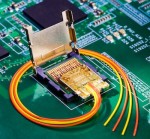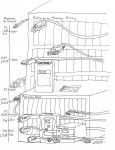Yesterday I talked about Light Peak, the new optical interconnect being developed by Apple, Intel, and others. Today I’m continuing that theme, suggesting a possible productization that would really take Light Peak to the next level: Integrating it with USB 3.0.
USB
Is Everyone Wrong About Light Peak?
Light Peak isn’t anything yet; it doesn’t exist. But I don’t think Light Peak will become the USB 3.0-killer that many folks suggest. Light Peak is a cabling spec only, not a new protocol that will eliminate everything that currently exists. In other words, Light Peak is a “middle connection” between a computer and peripherals that will retain compatibility with USB, HDMI/DVI, and Ethernet.
Is The iPad Compatible With SDXC and ExFAT Cards?
After Apple added SDXC and ExFAT compatibility to Mac OS X in 10.6.5, I got to wondering if they had added similar compatibility to the iPad in iOS 4.2.1. Although the hardware reader is probably not SDXC-capable, it wouldn’t have been too hard to add the ExFAT driver from Mac OS X to iOS. Then, the iPad could import from SD cards formatted as ExFAT and USB-connected cameras.
How Fast Is It? A Storage Infographic
How fast is a hard disk drive? How about the various flavors of SATA and Fibre Channel? Check out this handy Pack Rat infographic to answer the question, “how fast is it?”
The Four Horsemen of Storage System Performance: I/O As a Chain of Bottlenecks
It is tempting to think of storage as a game of hard disk drives, and consider only The Rule of Spindles. But RAM cache can compensate for the mechanical limitations of hard disk drives, and Moore’s Law continues to allow for ever-greater RAM-based storage, including cache, DRAM, and flash. But storage does not exist in a vacuum. All that data must go somewhere, and this is the job of the I/O channel.




